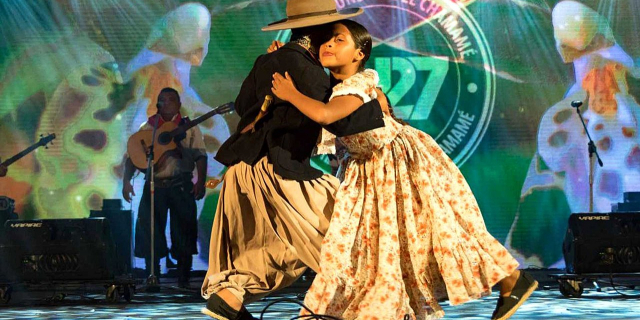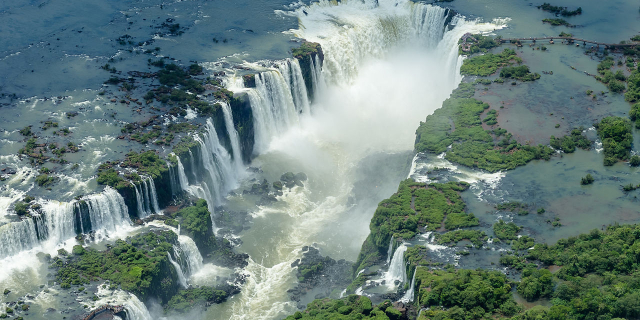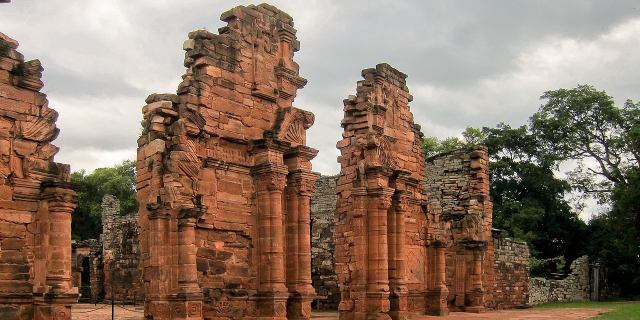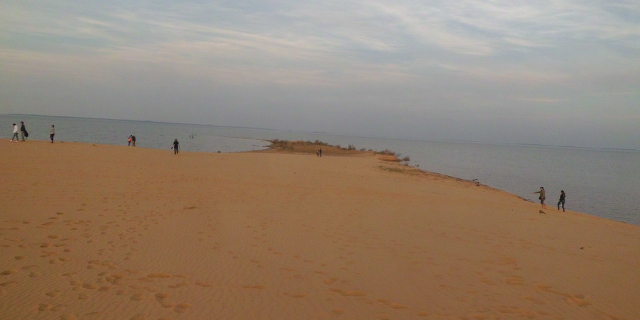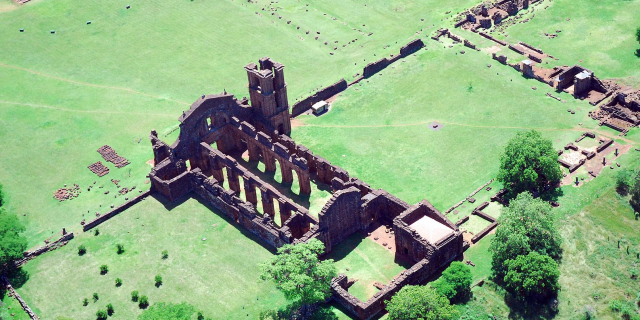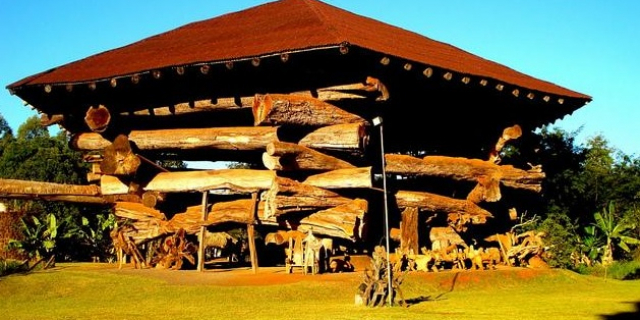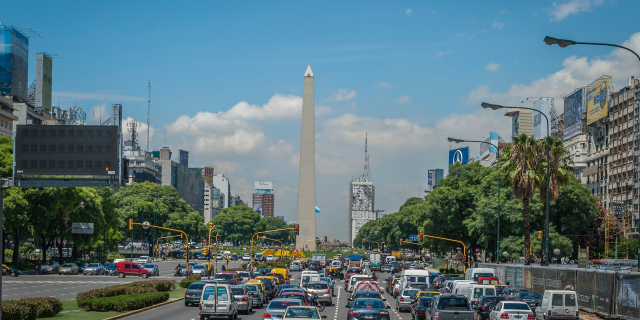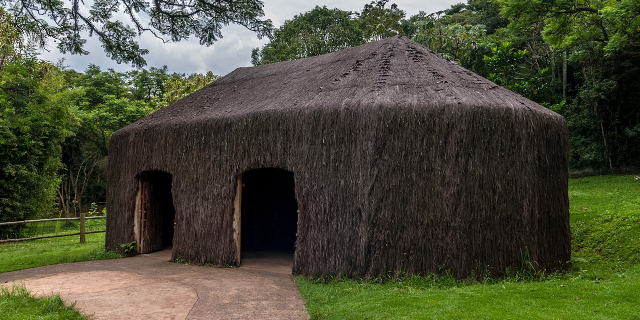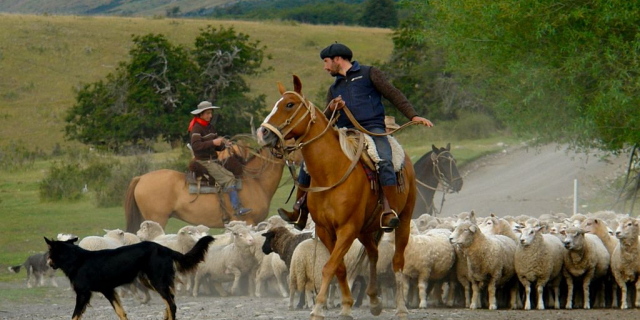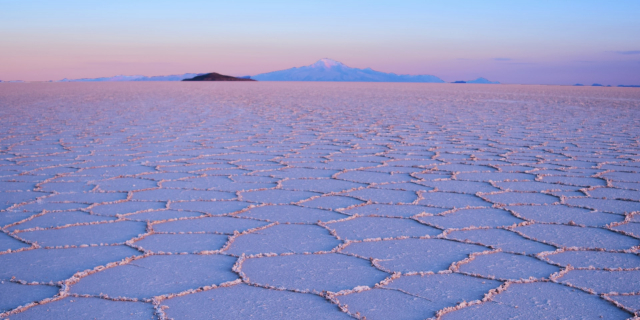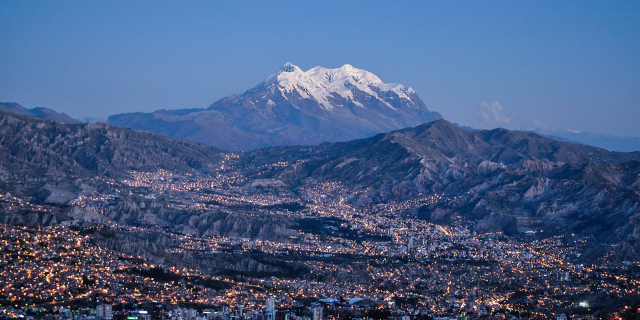Mesopotamia, Argentina
Context of Mesopotamia, Argentina
La Mesopotamia or Región Mesopotámica is the humid and verdant area of northeast Argentina, comprising the provinces of Misiones, Entre Ríos, and Corrientes. The landscape and its characteristics are dominated by two rivers: the Paraná and the Uruguay.
When Spanish settlers came to the area, the two parallel rivers and the lush area between them drew comparisons to Mesopotamia (Greek: Μεσοποταμία "land between rivers") in modern-day Iraq, and it was decided that the Argentine region be named after the Iraqi region. The region shares many of its ecological features with neighboring regions of Argentina and with parts of Brazil, Paraguay, and Uruguay.
Mesopotamia has some of the most popular tourist attractions in Argentina, mainly the Iguazú Falls, the Iguazú National Park, and the Jesuit mission stations in Misiones. The Iberá Wetlands in Corrientes are an extensive area of flooded forest similar to Brazil's Pantanal.
The region is part of the Brazi...Read more
La Mesopotamia or Región Mesopotámica is the humid and verdant area of northeast Argentina, comprising the provinces of Misiones, Entre Ríos, and Corrientes. The landscape and its characteristics are dominated by two rivers: the Paraná and the Uruguay.
When Spanish settlers came to the area, the two parallel rivers and the lush area between them drew comparisons to Mesopotamia (Greek: Μεσοποταμία "land between rivers") in modern-day Iraq, and it was decided that the Argentine region be named after the Iraqi region. The region shares many of its ecological features with neighboring regions of Argentina and with parts of Brazil, Paraguay, and Uruguay.
Mesopotamia has some of the most popular tourist attractions in Argentina, mainly the Iguazú Falls, the Iguazú National Park, and the Jesuit mission stations in Misiones. The Iberá Wetlands in Corrientes are an extensive area of flooded forest similar to Brazil's Pantanal.
The region is part of the Brazilian central plateau. The whole region has high rainfall, particularly in August and September, up to 2,000 mm annually. Misiones, in the northern part of Mesopotamia, is largely covered by subtropical forest, with caiman, toucans, and monkeys. Fast decomposition of organic matter gives the area a red soil with only a thin fertile layer that can easily be washed away. Corrientes is marshy and wooded, with low hills. Entre Ríos is covered with fertile pasture land that stretches into Uruguay.
The flora of Mesopotamia includes the yatay palm (Syagrus yatay, Butia yatay), which is a protected species in the El Palmar National Park, and the Araucaria angustifolia (Paraná pine tree). Tree ferns, orchids, and large trees can also be found.
Yerba mate (Ilex paraguariensis) is grown largely in Mesopotamia; 1,800 square kilometres of Misiones are devoted to its production. The region is also important for cattle and sheep, poultry, linseed, tobacco, citrus, and rice.
Gualeguaychú in Entre Ríos is popular for its carnival at the beginning of Lent. Corrientes is also known for its carnival celebrations and is a centre of music and festivals generally: the chamamé music style has recently seen a resurgence in popularity.
The region called Litoral (Spanish for coastal) consists of the Mesopotamia and the provinces of Chaco, Formosa, and Santa Fe.

